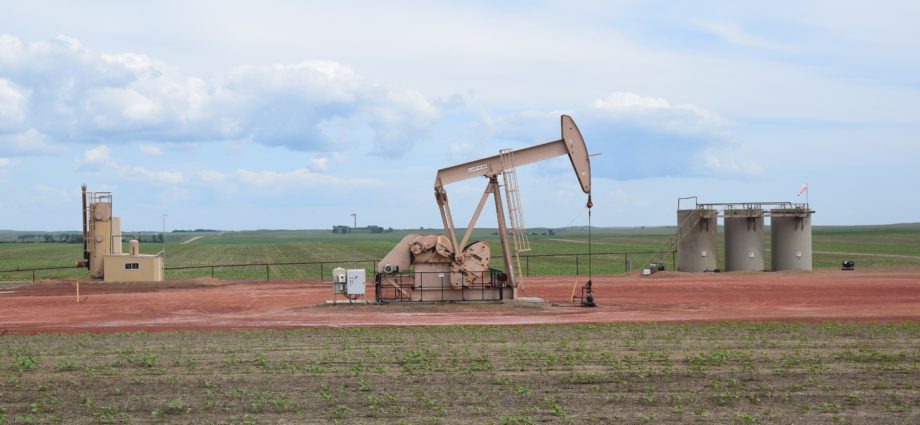The growing cost to clean up abandoned and orphaned wells
Image by mhouge/ Pixabay
Kevin Kemball, Northern Alberta Institute of Technology
Lately, there’s been growing concern over the number of abandoned oil and gas wells in Alberta, British Columbia and Saskatchewan. Many of these wells are on farms, ranches or forests, and leaks from aging wells risk contaminating the soil and water.
The industry operates under the premise that companies must pay to clean up wells that are no longer in use. But with the era of rapid expansion and growth in the fossil fuel energy sector behind us, some companies have gone bankrupt and no longer have the resources to cover the high costs of cleanup, leaving behind thousands of so-called “orphan” wells.
Some worry the costs will be passed to taxpayers, as they were with the clean up of the Sydney Tar Ponds in Nova Scotia. In late April, the federal government launched a $1-billion program to clean up abandoned and orphan wells in Alberta, British Columbia and Saskatchewan, and the provinces have promised hundreds of millions in loans.
How many wells are we talking about?
Oil and gas companies drill holes into the ground to bring fossil fuels to the surface. They consist of steel and concrete, and can be hundreds of metres deep.
When they are no longer in use, or “inactive,” companies are required to periodically inspect and maintain the well. When there is no plan to use the well again, it is then partially removed, or “abandoned,” in a process that involves cleaning the well bore, plugging it with cement and removing the top. After a well has been abandoned the land can then be reclaimed.
There may be more than 91,000 inactive wells and 2,992 orphan wells in Alberta alone, with another 10,000 additional inactive or abandoned wells in British Columbia and 24,000 in Saskatchewan.
An abandoned well remains the responsibility of the company that owns it until its reclamation has been certified as complete. Orphan wells, on the other hand, are wells or associated facilities that no longer have a company responsible for them able to close the well and return the land to how it looked or was used before.
There are three basic steps to return a well site its previous state: abandonment, remediation and reclamation.

What does ‘cleanup’ mean?
Abandonment seals the well so that it can no longer be used. The above-ground infrastructure such as pumps and pipes is removed, and the well is cut and capped at least one metre below the ground. The area is backfilled and checked for gas or liquid leaks that could be a threat to public health.
During the remediation step, soil and groundwater are tested for contaminants, such as salt or hydrocarbon-contaminated water and oil, and treated. Contaminated soil can be treated on site (often called land farming) or removed and replaced with clean soil (referred to as a dig and dump). Contaminated groundwater is typically removed or treated by installing of several temporary wells.
Read more: A tenth of active and abandoned oil and gas wells in northeastern B.C. are leaking
Remediation isn’t always necessary, but it is the most expensive step and can take years or decades to complete. Research into remediation technologies and improvements is very active in many post-secondary institutions.
Reclamation begins when the site is ready to be returned to its former use, or some other acceptable land use such as farming, ranching or forest. This may mean planting trees, grasses or re-establishing wetlands. Following a period of monitoring that may take several years, the land is then certified and returned to the previous owner.
Cost of cleanup
There’s a new-found urgency to clean up inactive and abandoned wells. Estimates to reclaim wells in Alberta rose to $260 billion in 2018 from earlier estimates of $58 billion. In British Columbia and Saskatchewan, the estimated costs have grown significantly since 2007 to $3 billion and $4 billion, respectively.
Although the size of the cleanup cost is alarming, it remains the responsibility of the companies responsible for the wells. What’s not included, however, is the liability of those wells that are no longer on company books. The cost to clean up these orphaned wells could be as high as $100 billion.
The issue of orphan wells is not evenly distributed across the oil and gas industry. It is almost exclusively concentrated with small and medium producers. But the energy sector recognizes their danger to the entire industry — from reputational harm and having a social license to operate — and supports the cleanup of orphan wells through orphan well associations (OWA).
In Alberta, the OWA is funded by a levy placed on all producers, and added up to about $60 million in 2019-20. The OWA prioritizes the lands it has under management to those that could cause harm to life or to the environment, and then to legacy sites on farmland or ranch land that continue to cause financial harm.
To stem the growth of orphan wells, the government of Alberta has provided more than $300 million in grants and loans to the OWA and announced a new liability management framework, including regulation changes in how producers are assessed before given approval to drill a new well.
Subscribe to our newsletter.
The threat of more wells becoming orphaned is likely to increase given the long-term downward trend in the oil and gas industry. The attention given and investment announced over the last year to faster cleanup of inactive and abandoned wells is providing hope for the future. It is still too early to tell if we have truly learned the lessons of the past, but there appears at least to be a general agreement on the scale and urgency of the problem.
Kevin Kemball, Director – Centre for Boreal Research, Northern Alberta Institute of Technology
This article is republished from The Conversation under a Creative Commons license. Read the original article.

